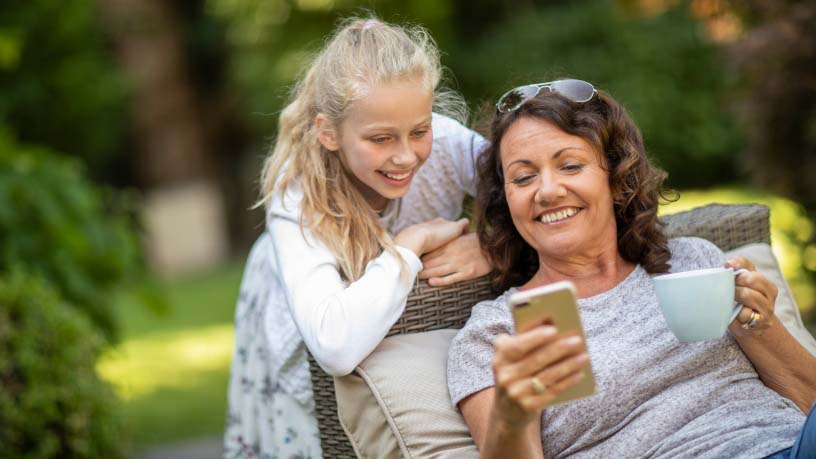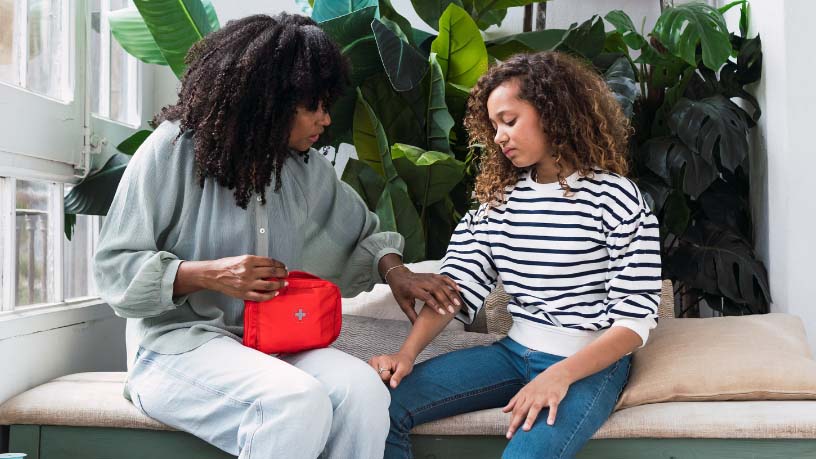An easy way to create an interesting lunchbox is to swap just one familiar ingredient for a new one.
On this page
Key takeaways
Make veggies the supporting act instead of the main cast. Subtlety goes a long way here.
Keep a running list of new meal ideas so you always have a growing collection to dip into.
If you find it challenging to pack a healthy lunchbox that your kids will actually eat, you’re not alone. It’s a balancing act, for sure, but with a few clever and easy tricks, you can make lunchtime both nutritious and delicious.
A healthy lunchbox isn't just about filling rumbling tummies, it's also brain fuel for kids to help them focus, learn, and have fun at school. Think of it like a nutrient boost that powers their growing bodies over time.
Serving up healthy lunches now also helps kids build a strong base for healthy eating habits in adulthood.
But here’s the thing: knowing the importance of a healthy lunchbox doesn’t make prep time any easier. Juggling different diets, allergies, and variety while keeping meals tasty and healthy can sometimes feel like a brain-teaser.
The good news? There are ways to make this daily routine easier and increase the likelihood of an empty lunchbox at the end of (almost) every day.
Experiment with variety
Keep things interesting by mixing and matching flavours and textures. Pair crunchy veggies with creamy dips, sweet fruits with savoury cheeses, and chewy granola bars with crisp apple or pear slices. This makes for a delicious, well-rounded eating experience.
If you can, serve new foods with familiar foods so your child doesn’t have to venture too far out from their comfort zone. Sometimes just changing one ingredient in a familiar meal can make all the difference. Crackers and cheese are always a winner in the ‘familiar food’ category because its milder taste is easy on the palate.
Also try serving different fruit with consistent textures and taste, like apples and pears or blueberries and grapes.
Make veggies fun
The ‘I hate veggies’ phase is such a natural one for most children, but that doesn’t mean reducing or removing veggies from their diet. Get around their protests by adding veggies in dishes with stronger flavours like pasta sauces and dips or into a quiche, frittata or savoury muffin.
You could also make veggies a smaller part of the meal, like a topping or side. And because we eat with our eyes first, jazz up the presentation with colourful veggie skewers or use a cookie cutter to make fun shapes.
Involve your kids in lunchbox prep
This a fantastic way to boost their independence and encourage them to eat (and enjoy) their lunch.
Start by getting them to do the supermarket run with you. At home, they can help with small tasks like pouring, stirring, spreading, or assembling. Older kids can even help with peeling and cutting up veggies and fruit. And, of course, taste testing is a must!
Stay inspired throughout the year
There’ll be days when you feel like you’re nailing lunchbox prep and days when you’re completely uninspired. For the latter days, start by being kind to yourself and choose the easiest lunchbox option, even if it’s a repeat from earlier the week.
Then look for online resources and recipes that can help spark ideas. Bookmark these to turn to each time your meal inspiration dries up or join an online community to exchange ideas.
To get you inspired, here are some of my favourite lunchbox recipes.
Healthy yoghurt bark
Mix plain Greek yoghurt with maple syrup or honey and spread onto a lined baking sheet. Sprinkle with preferred toppings such as dark chocolate chips, strawberry slices or any finely chopped fruit. Freeze for at least 3 hours until firm. Cut into pieces and serve or pack in the lunchbox with an ice pack.
Nut-free bliss balls
Blend chopped Medjool dates, rolled oats, desiccated coconut, cocoa powder, maple syrup or honey, and vanilla extract until combined. Take a spoon at a time and roll into small balls.
Roasted chickpeas
Rinse and dry canned chickpeas. Add preferred seasonings like olive oil, cumin, paprika, and salt and pepper, and toss until combined. Spread the chickpeas on a lined baking sheet and bake at 200°C for 20 to 30 minutes or until crispy, stirring halfway through.
Caprese skewer bites
Thread cherry tomatoes, mini mozzarella balls and basil leaves onto skewers for a bite-sized twist on the classic caprese salad. Drizzle with balsamic glaze or olive oil and sprinkle with salt and pepper.
Mini Greek yoghurt pancakes
Use Greek yogurt in your usual pancake batter for added protein and creaminess. Add a side of maple syrup or fruit compote.
Protein-packed salad jars
Layer mason jars with cooked quinoa or brown rice, a choice of protein and a variety of veggies and toppings. Drench in a flavourful vinaigrette.
When you find ideas and recipes that work for you, keep practicing them and soon, creating healthy lunchboxes that your kids love will be a breeze.

At Bupa, trust is everything
Our health and wellbeing information is regularly reviewed and maintained by a team of healthcare experts, to ensure its relevancy and accuracy. Everyone's health journey is unique and health outcomes vary from person to person.
This content is not a replacement for personalised and specific medical, healthcare, or other professional advice. If you have concerns about your health, see your doctor or other health professional.
You might also like…
7 holiday hacks every parent should know
Whether you’re driving or flying, travelling with the kids can be its own stress-filled adventure. We’ve put together some hacks to help you holiday
How to talk to your kids about social media
Social media is a daily part of our kids’ lives, whether we like it or not. So, what are the risks and benefits, and how can we keep our kids safe online?
Eco Anxiety: How to help kids manage it
Our world is being affected by climate change, and so is the mental health of our kids. So how can you help them if they experience eco-anxiety?
How to create a home first aid kit
A well-equipped first aid kit is essential for any home, car or office. Discover our easy guide to ensure you have the right gear for life’s emergencies.





